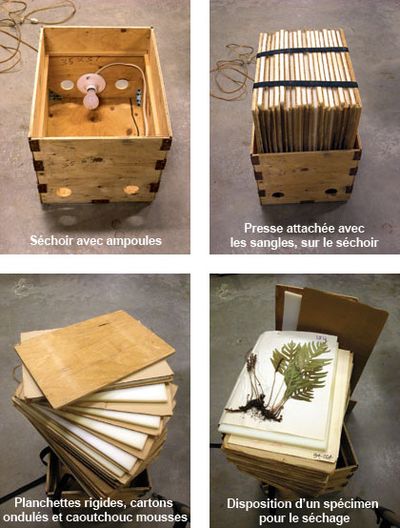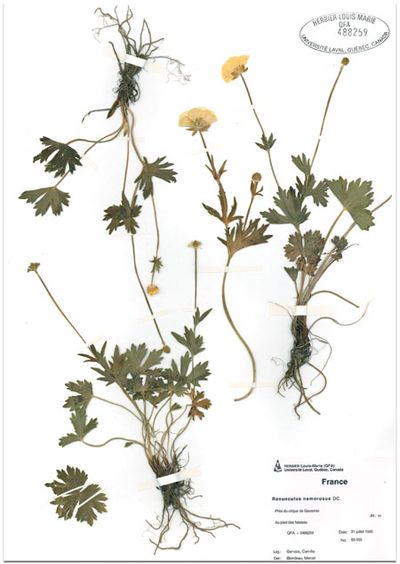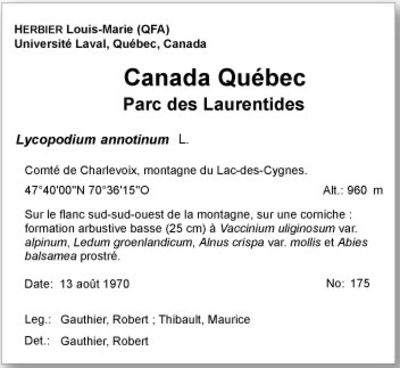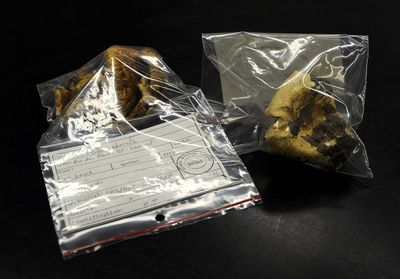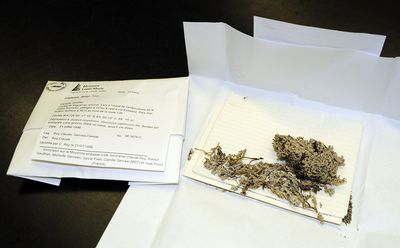A herbarium is a collection of dried plant specimens that bear witness to the existence of plant species at different stages in their life cycles, in diverse locations on the planet, and at precise moments in human history. In this manner, each specimen possesses intrinsic heuristic and heritage values and cannot be replaced. The idea of collecting plants goes back to the first stumblings in botany. At that remote time, plants were primarily destined to be used for medicinal purposes. The botanists therefore only collected living plants which they cultivated in a garden: this was the herbarium vivum or living herbarium.
With the coming of the sciences, an interest in vegetation began to develop that was beyond their strict medicinal usages. The number of known plants increased and their geographic origins diversified. Paralleling this, the number of species that were difficult to cultivate in their gardens increased. It therefore became more practical to press and dry the plants and mount them on paper in order to preserve them for a long time. Thus the herbarium siccum or dry herbarium was born. The practice of accumulating specimens and building facilities to preserve them became more widespread and herbariums were constructed in all of the centers where science was flourishing. The oldest herbariums, which were spared from wars, fires, insects, and other plagues, are found in Florence and Bologne in Italy, as well as in Leiden in the Netherlands. They date back to the 16th century.
The herbarium siccum, despite its popularity, did not completely replace the herbarium vivum. Indeed, they have persisted up to the present in the form of botanical gardens which, while still playing an important scientific role, have had their original mission to heal diseases be replaced by one emphasizing their aesthetic value. Today, the term “herbarium” applies only to the herbarium siccum.
A herbarium specimen is above all a witness to the existence of a plant species at a specific location at a given moment of time. In regards to the profound natural and anthropogenic modifications which have occurred and are still occurring to the vegetation cover of our planet, herbariums are extremely important places of scientific and cultural heritage. Herbariums constitute an important part of our “vegetation memory”. The other part of this memory is preserved in published scientific works.
In addition to their heritage value, herbariums are important teaching and research tools for several disciplines including botany, taxonomy, phylogeny, ecology, and biogeography. In order to play an essential role in these domains, a herbarium must possess three fundamental characteristics: it must assemble the greatest number of species possible, include all of the ontogenical development stages for each species, and contain a large number of specimens for each species.
A herbarium is firstly a place to preserve the diverse vegetation of a given region and secondly a tool to identify plants, at any stage of development, by comparing them with the specimens in the collection. The latter is certainly the most common usage of herbariums, as it is this fundamental starting point in plant knowledge that attracts amateurs, students, professors, and professionals in the plant sciences to herbaria.
